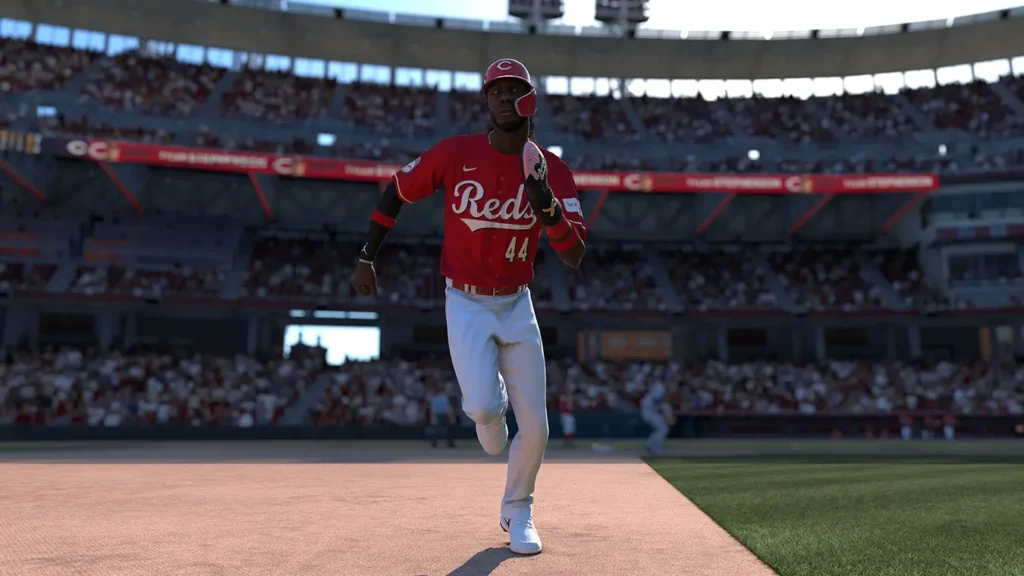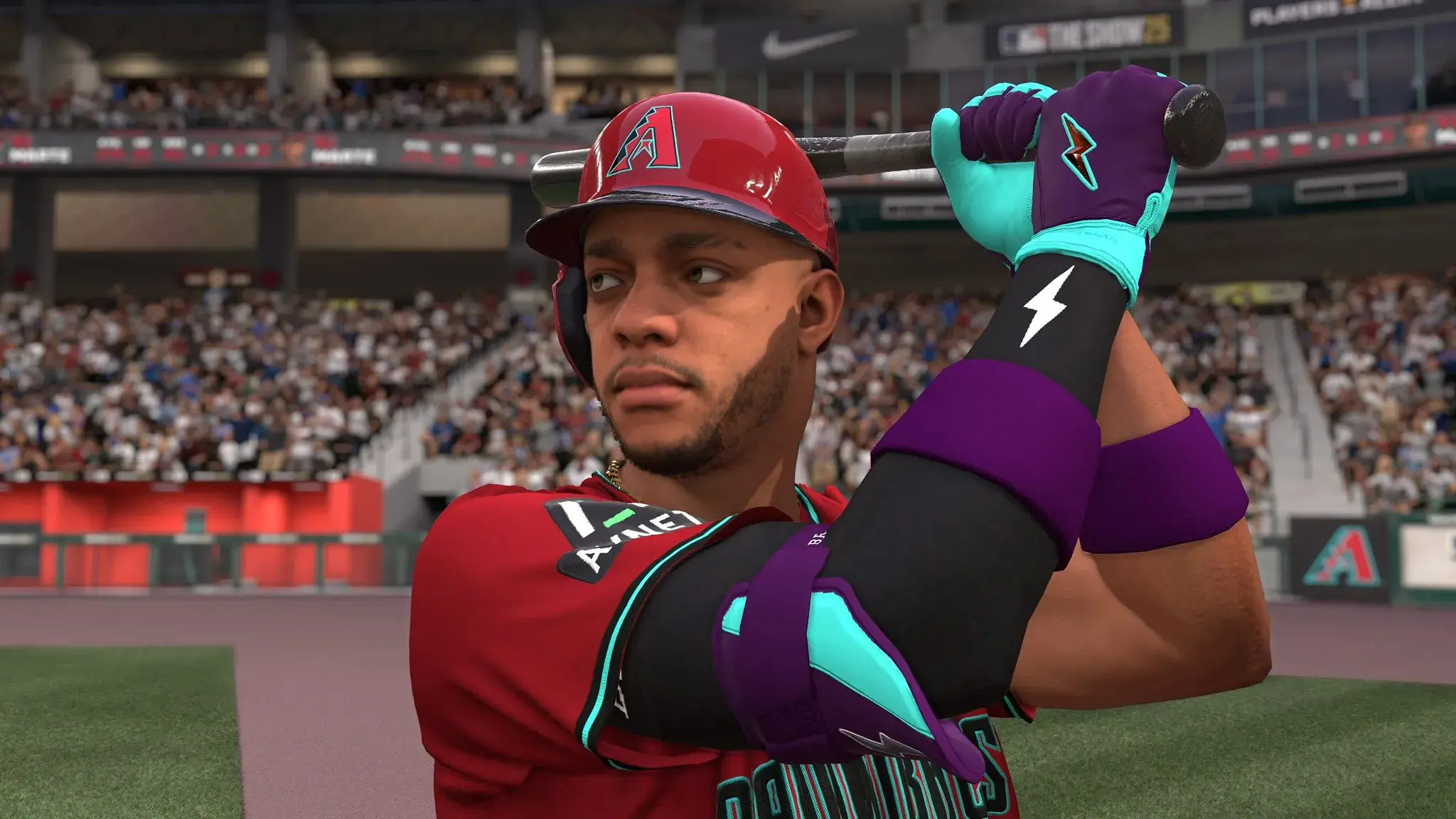Continuing an annual sports simulation can be a tough balance act. MLB The Show 25 confidently takes on this challenge by improving key features like Road to the Show and Diamond Dynasty and refining what already works with the core gameplay without moving too far.
Subtle Shifts in Gameplay Mechanics
The overall gameplay of baseball may be much the same but various little tweaks go a long way towards a smoother experience. Changes such as pitch clocks, shift rules enforcement, and two-way player support now fit seamlessly into games.
There are a few new quick-time events including a swim move for trying to steal a base. While its ability to affect the balance of the game was concerning for a day or two, it now happens way too infrequently for such consideration.
Defensive responses have improved, especially in infielders. First-step animations are changing how effectively a player gets to the ball, bringing out skill differences. Lower rated players will sometimes make defensive mistakes. Conversely, this raises the profile of defensive stars, a noticeable factor in Franchise Mode.
Ambush hitting adds another layer of complexity. Batters can now target inside or outside pitches. Although the proposition promotes tactical diversity, neutral positioning often yields better results. Overall, the batting system is fairly robust, although the outcomes of perfect contact are often disappointing singles or hard outs which feel slightly underwhelming. This may be something that could see balance adjustments in the future.
Franchise Mode Retains Familiar Strengths
Franchise mode continues its steady evolution. It doesn’t change much from last year, but it does make it better. One of the coolest features is the simulation option that allows you to skip through games until you reach the most exciting high-pressure moments.
Contract negotiations for free agents are now taking shape around selected targets instead of wide range. Gaining player interest over time allows teams to make strategic decisions on whether to recruit a superstar or add depth. It improves off-season strategy flow and increases immersion.

Steady Refinement With Thoughtful Additions
MLB The Show 25 is not the game to reinvent the wheel, instead expands on the already established core with confidence. Some interface improvements are included in Franchise and March to October modes, like player comparison.
There’s a new G.O.A.T. difficulty that includes incredibly fast pitching speeds and updated Plate Coverage Indicators. Although this place can feel chaotic for many, it is a rewarding test for those craving a tougher option.
Road To The Show Receives A Fresh Origin Story
This year’s Road to the Show has its biggest shift in years. Players don’t begin their career by first attending the pre-draft showcase. they begin their career in high school. These sequences provide a brief thrilling chance to get noticed by scouts to win a championship.
One such player who exemplifies the broad-reaching potential of these new beginnings is Pinky Rogers. Whether to jump to pro or stay in college is a big decision because his showing can attract college and pro interest.
Choosing to attend college has great benefits, like better starting attributes and a faster route through the minors. The new pathway also includes eight actual college teams complete with uniforms and metal bat sounds for a realistic feel.
Redefining Player Development
The player upgrade system in Road to the Show is overhauled structurally. The game no longer follows an RPG-style “improve what you use” system, but uses tokens instead. Success achieved in either training or games adds to the general progress of the horse. This general progress can then be allocated to a specific attribute.
This change makes development more intuitive and engaging. Longer drills (specifically Inter-Squad matches) often feel less rewarding than shorter drills. But the drills create a clearer sense of progression and lead to longer games.

A Continued Celebration Of The Negro Leagues
The Negro Leagues mode comes back for another year, combining a blend of old-school gameplay and history in an excellent format. Through playable moments and narrated documentaries, experience and play with key moments from the lives of players like Cool Papa Bell and Caleb “Turkey” Stearns.
The president of the Negro Leagues Baseball Museum, Bob Kendrick, informs the narrative with perspective while providing emotional context. Though the telling of the story remains strong, the gameplay, itself, does not seem to have evolved. Most of the time, you’ll be trying to knock one out or get someone out, with your sole objective focusing on base hits or strikeouts. The past innovations seem to be missing this time around. Remember the Satchel Paige moment when the fielders sat down? That kind of innovation is not present this time around.
Storylines Mode Misses An Opportunity
The absence of a story about a contemporary baseball star is remarkable this year. Last year’s feature on Derek Jeter showed promise for growth through potentially branching storylines and meaningful progression. MLB The Show 25 takes a step back from this and misses a beat that allows for storytelling innovation that adds to the experience.
A New Era For Diamond Dynasty
Diamond Dynasty has been improved in two significant ways. The Sets and Seasons system which made cards disappear before is now removed. Now, players can spend their money on the best athletes such as Roger Clemens without fearing their investment turns useless. This adjustment makes long-term planning more worthwhile.
Diamond Quest which has been inspired by rogue-like games plus tabletop RPG adventures, is the new solo mode added to the game. The players toss the dice and cross the board and get into events, fights and get rewards. Objective – Get to the stadium and win a short three-inning match Winning opens all the loot, including rare cards, based on chosen difficulty level.
Replayability is a major strength here. Every time you play, it’s different. Also, you get to choose the difficulty before the final battle. Plus, creating the risk-reward element. Diamond Quest is a nice change from the existing Diamond Dynasty model for players who like variety and strategy.
Conclusion: Stepping Forward, Not Repeating
MLB The Show 25 makes a good case to appear in the year-to-year sports game rotation. You’ll find the rebooted Road to the Show, revised gameplay dynamics and a better Diamond Dynasty to be great reasons to return. Getting rid of card expiration adds value for the long term, while high school and college paths deepen the single player experience.
Though a dated icon-focused narrative and lack of evolution in Negro Leagues play does limit its overall innovation, there are enough upgrades present to make the game feel like a step up. Sophisticated modifications and affirmed strengths ensure that MLB The Show 25 remains relevant and wholesome in the sports simulation landscape.

